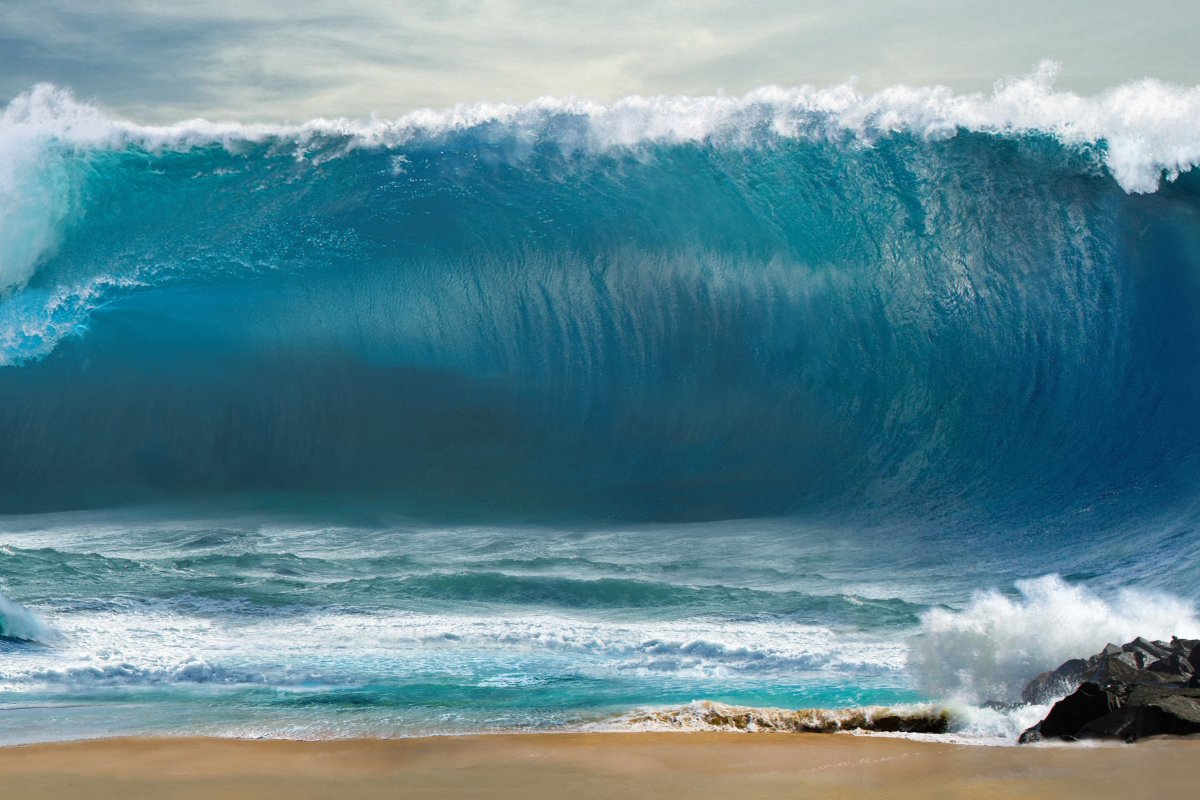A prehistoric tsunami that occurred more than 8,000 years ago may have devastated Stone Age coastal communities, a study has revealed.
The event, known as the Storegga tsunami, affected a large area of northern Europe and beyond, leaving traces in the form of sediment deposits in areas as distant as northern Norway, northern England, western Scotland, the Scottish Shetland Islands and eastern Greenland.
The tsunami, triggered by a huge submarine landslide off the coast of western Norway between 8,120 and 8,175 years ago, generated waves of up to around 40 feet in height along the Norwegian coast and 10-20 feet in mainland Britain. In the Shetland Islands—an archipelago located over 100 miles north of the Scottish mainland—the waves are thought to have reached more than 65 feet in height.
The tsunami event coincided with an apparent large population decline in the coastal populations living nomadic, hunter-gatherer lifestyles in northern Britain during the Mesolithic (or Middle Stone Age) period.
But despite extensive evidence of the tsunami over a wide area of the North Sea, there is a lack of research quantifying the impact of the event on Mesolithic communities in the region. In fact, very little is known about the impacts of ancient tsunamis on contemporary populations in general.
In the study, published in the Journal of Quaternary Science, researchers attempted to assess what impact the event might have had on populations living at the time.
"This is one of the first attempts to directly link the Storegga tsunami to its effects on Mesolithic people," Patrick Sharrocks, an author of the study affiliated with the University of York and University of Leeds in England, told Newsweek.
For the study, Sharrocks and his colleague Jon Hill—also affiliated with the University of York—used a supercomputer to model the Storegga tsunami and then assessed its potential impacts on the human populations living in the region.
Specifically, the researchers examined the impacts of the tsunami on the coast of what is now Northumberland, a region in the far northeast of England bordering Scotland.
The Northumberland coast is home to Howick, one of Britain's most important Mesolithic sites. The site is located within a resource-rich location on a river estuary a few hundred feet from the coast. Evidence of extensive hazelnut collecting suggests the site was occupied at least during the autumn and winter, although year-round living may also have been possible.

Humans appear to have inhabited Howick before the Storegga tsunami, but it was likely to have been occupied when the event occurred. Previous research has uncovered a sediment deposit close to the site that the tsunami may have produced. This deposit may represent a rare piece of evidence that could help to shed light on the direct impacts of the tsunami on Mesolithic people—but its origin is uncertain.
In the latest study, the researchers found that the tsunami could have inundated the sediment deposit site—and thus, could have formed the deposit—but only if the wave struck the coast at high tide.
The researchers also found that the impact on the Mesolithic people in the area would likely have been "significant" with the models showing high mortality rates at Howick—a direct result of the tsunami. At Howick, mortality estimates varied but reached up to 100 percent for prehistoric humans within the resource-rich intertidal zone.
"The mortality estimations for the intertidal zone were higher than we expected with the implication that the impacts on Mesolithic people could have potentially been severe," Sharrocks said.
The models suggest the tsunami would have inundated a large area, leading to the loss of critical resources, such as hazelnuts, before the winter months. Aside from the direct impacts of the tsunami on Mesolithic peoples, this loss of resources would have significantly reduced their ability to survive the harsher months.
The combined effects of the tsunami would also likely have been replicated throughout coastal populations in northern Britain, according to the researchers.
The results suggest "a potentially significant local and regional impact, which could have contributed to the suggested population decline at the time," Sharrocks said. "The lack of previous tsunamis in living memory would have meant warning signs such as a receding ocean would likely have been ignored, as was the case in some of the worst affected areas in the 2004 Indian Ocean tsunami."
The researchers said the framework of the study could be used to investigate other locations affected by the Storegga event or other ancient tsunamis to understand the impact on past humans. Studies of past events such as this could also help us to better understand the potential effects of future tsunamis.
Uncommon Knowledge
Newsweek is committed to challenging conventional wisdom and finding connections in the search for common ground.
Newsweek is committed to challenging conventional wisdom and finding connections in the search for common ground.
About the writer
Aristos is a Newsweek science reporter with the London, U.K., bureau. He reports on science and health topics, including; animal, ... Read more
To read how Newsweek uses AI as a newsroom tool, Click here.








